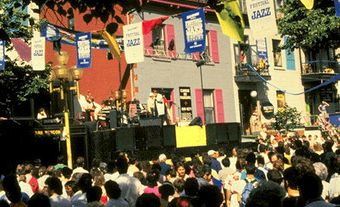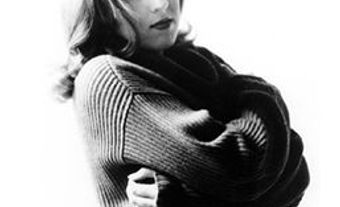The Festival international de jazz de Montréal (FIJM, translated in English as Montreal International Jazz Festival and often referred to simply as the Jazz Fest) is an annual music festival in downtown Montreal. First held in 1980, the festival initially took place in several locations across downtown Montreal before settling around the Place des Arts. The Jazz Fest was founded by Alain Simard in association with André Ménard, Denyse McCann and Alain de Grosbois. It has been recognized by Guinness World Records as the world’s largest jazz festival. It is also considered Canada’s largest music festival. It generally lasts 10 days and takes place from the end of June to the beginning of July.

Early History of Jazz in Montreal
Jazz has a long history in Montreal, stretching back to the early decades of the 20th century. The introduction of jazz to the city was likely due to the presence of young Black men, many of whom worked as railway porters and lived near Montreal’s major downtown train stations. This area, known as St. Antoine and eventually as Little Burgundy, became the heart of Montreal’s historic Black community.
By the 1920s, jazz was a fixture in many popular Montreal night clubs. The city also benefitted from Prohibition in the United States, as it became known as “Sin City” for Americans in search of nightlife. Many of these clubs were located in Montreal’s “red light district” — an area of downtown near what is now called the Quartier des Spectacles. But two of the most important jazz clubs in the city, Rockhead’s Paradise and Café St-Michel, were located in Little Burgundy and were owned and operated by Black entrepreneurs. Montreal jazz legends such as Oscar Peterson and Oliver Jones got their start at Rockhead’s Paradise and Café St-Michel. Major American jazz acts such as Louis Armstrong, Billie Holiday, Ella Fitzgerald, Nina Simone and Dizzy Gillespie also performed there.
Montreal Jazz Festivals Before the “Jazz Fest”
The roots of the Montreal Jazz Fest are connected to this history of jazz in Montreal and to Rockhead’s Paradise, specifically. Rouè Doudou Boicel, a jazz lover and impresario, started the Rising Sun Celebrity Jazz Club in 1975. He bought Rockhead’s Paradise in 1980. Concurrently, Boicel also founded the Rising Sun Festijazz, an international jazz and blues festival that ran from 1978 to 1980. It was a major success, and Boicel began booking big-name acts to perform at Place des Arts. It was due in no small part to Boicel’s efforts that interest in jazz was rekindled in Montreal in the 1970s.
Another important contributor to the re-awakening of jazz in Montreal was bassist, restaurateur and impresario Charlie Biddle. He ran a jazz club and restaurant in downtown Montreal for many years. Biddle performed with Oscar Peterson and had promoted jazz concerts in Montreal throughout the 1960s and 1970s. In 1979, Biddle organized the three-day Jazz Chez Nous concert.
Early Years of the Montreal Jazz Festival
The Jazz Fest initially took place at Man and His World, an annual summertime festival and exhibition located on the site of the former Expo 67 fairgrounds. (See also Music at Expo 67.) The first edition of the festival was held in the summer of 1980. It attracted 12,000 people for shows by about 100 artists, including Ray Charles, Chick Corea and Montreal big band leader Vic Vogel.
The former Expo pavilions were rapidly deteriorating, so the festival began looking for other locations. By its second year, the festival took place at three distinct locations across Montreal, including a location downtown and another in Old Montreal.
In 1982, the festival’s third year, it incorporated as a non-profit organization. By then, the festival had consolidated on Rue St-Denis, which offered several important venues, including the venerable and historic Théâtre St-Denis. A portion of the street was closed to traffic and became pedestrian-only during the evenings for the duration of the festival. This was a defining characteristic of the Jazz Fest that would later be adopted by other Montreal festivals as well. In addition, street corner stages were established, marking another defining characteristic of the Jazz Fest that would later be copied by other seasonal festivals.
The Jazz Fest continued on Rue St-Denis for the rest of the 1980s. In 1986, a second location was set up around Place des Arts (PDA), one of the largest multidisciplinary
arts complexes in Canada. Also in 1986, the Jazz Fest held its first large, free outdoor event, which would become a staple of the festival.
The festival migrated to the PDA and consolidated there in 1988. By 1991, a dozen venues clustered around the PDA were being used for the Jazz Fest. By that point, the festival had expanded to 300 performances, including many free outdoor shows. In
addition, the festival now regularly featured large outdoor shows with major headliner performances and crowds in the tens or hundreds of thousands.
The Contemporary Festival
In 2004, 2 million people attended the festival, which celebrated its 25th anniversary by entering the Guinness Book of World Records as the world’s largest jazz festival. The Place des Festivals, located across the street from the PDA, was inaugurated in 2009. The festival now uses this plaza as its epicentre and the site of the festival’s major free shows. The Maison du Festival de jazz opened that same year in a building adjacent to the Place des Festivals. It serves as a restaurant and head office for the festival, as well as a space where jazz can be enjoyed year-round. (See also Montreal Making the Arts a Downtown Development Strategy.)
In 2019, the festival celebrated its 40th anniversary by holding performances in nearby Verdun. In 2020, due to the COVID-19 pandemic, the festival did not occur in person but instead was held virtually. A scaled-down festival took place in September 2021.
Now over 40 years old, the Jazz Fest has become a staple of Montreal’s summer festival season. It is located in the city’s Quartier des Spectacles entertainment district, focused on the Place des Arts cultural complex. The festival shuts down surrounding streets to automobile traffic, and its many outdoor concerts and activities take place until midnight. The festival generally lasts 10 days. It typically involves 3,000 musicians and singers from 30 countries performing 150 indoor shows and 350 free outdoor concerts. It is estimated to attract about 2 million visitors. The festival includes performances in a variety of styles that have connections to jazz music, such as rap, pop, R&B, blues, reggae, and Latin and African popular music.
(See also Jazz Festivals; Music in Montreal; Music at Place des Arts.)

 Share on Facebook
Share on Facebook Share on X
Share on X Share by Email
Share by Email Share on Google Classroom
Share on Google Classroom


